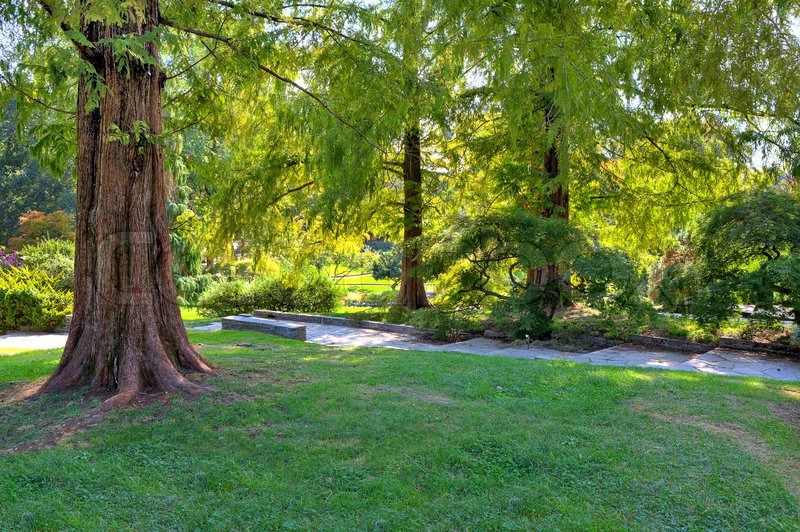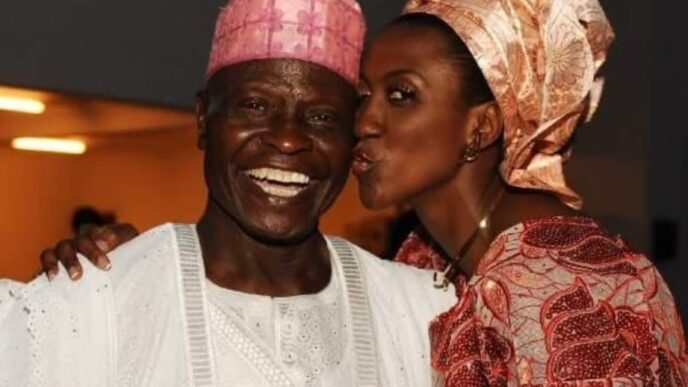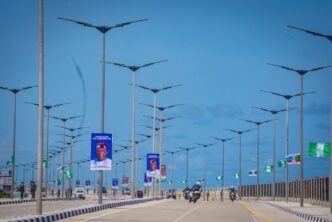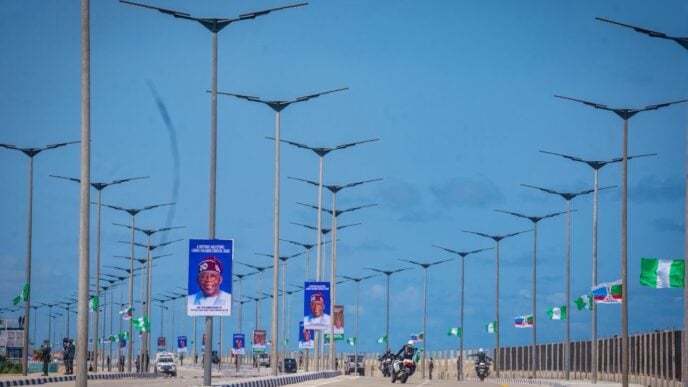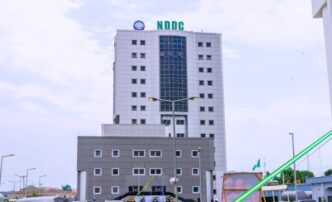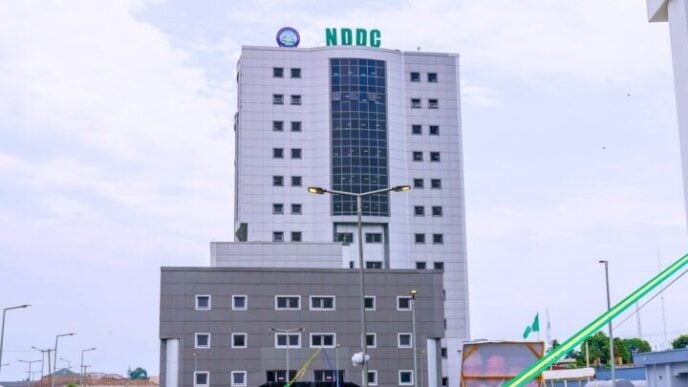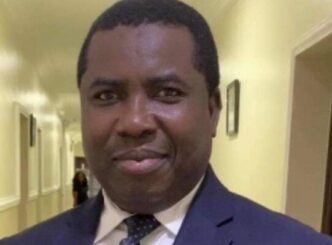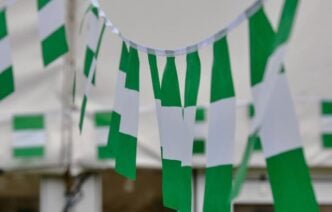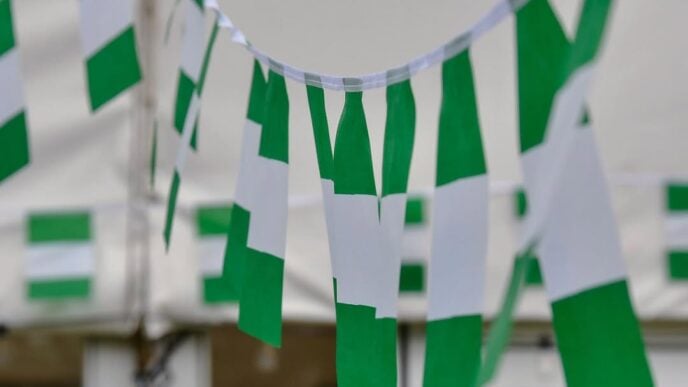BY GBENGA ONABANJO
There’s a rhythm to breathing we rarely notice — until something interrupts it.
Once upon a time, Lagos breathed easily. We had open fields where the air felt lighter, trees that danced in the wind, and parks where you could sit and let your lungs drink in freshness.
Today, that rhythm is broken. Golf courses are fenced off. Parks have turned into estates. Even when there’s green, it’s often locked away from the people who need it most. And with every tree we cut down, we chip away at our own ability to live well and breathe well.
Advertisement
TREES — OUR SILENT LIFESAVERS
As we breathe out carbon dioxide (CO₂), trees quietly take it in. They work day and night, turning CO₂ into oxygen — the very thing we need to stay alive.
One mature tree can produce enough oxygen to support an adult for a lifetime. An acre of mature trees can meet the oxygen needs of up to 18 people every year. And while they’re at it, they filter the air, catching dust, smoke, and harmful gases before they reach our lungs.
Advertisement
If you’ve ever wondered why people living in leafy, wooded areas often have better health check results, the answer is right above their heads. Cleaner air means healthier lungs — another reason why we must #ReclaimTheGreen.
A STORY THAT SAYS IT ALL
A friend of mine had battled a respiratory illness abroad. His recovery was going well — until he came to Nigeria for just two weeks. When he returned to England, his doctor was puzzled. “Where have you been?” he asked. The tests showed his lungs were clogged again. The difference? Back there, he had been breathing filtered, oxygen-rich air. Here, our city air, stripped of trees, was full of invisible trouble. So many ailments trace back to the polluted air around us.
THE BIGGER PICTURE: CARBON EMISSIONS AND A WARMING PLANET
Advertisement
Every time we drive a car, run a generator, burn refuse, operate a factory — or even fly in planes and ride diesel or coal-powered trains — we release carbon dioxide into the air.
In a healthy environment, much of it is “swallowed” by trees, grass, and plants. But here’s the problem: we’ve cut down so much green cover that the earth can’t keep up. We pave over every available space to save on maintenance costs.
The CO₂ that doesn’t get absorbed rises and lingers in the atmosphere, forming an invisible blanket around the earth. This blanket traps heat — just like a locked car heating up under the sun — causing global warming.
The result? Heat waves in places that used to be cool, flooding as polar ice melts and rain patterns shift, and storms and droughts becoming more extreme and unpredictable.
Advertisement
WHY GREENS ARE ECONOMIC ASSETS TOO
There’s another angle we often overlook — greens earn carbon credits. Countries and cities that protect and expand their green cover can qualify for carbon credit trading and even green finance.
Advertisement
Governor Ambode once initiated Lagos’s first-ever Greening Lagos Seminar at the Civic Centre, organised by LASPARK. Such initiatives can — and should — be revived, not just as talk shops but as launchpads for transformative projects funded by climate finance.
THE DUST THAT NEVER SETTLES
Advertisement
Even with the heavy rains we’ve had recently, Lagos’s air is still dusty and polluted. Without enough green cover to trap and filter dust, our street sweepers’ efforts vanish within hours.
This is why urgent and large-scale planting is not a luxury — it’s survival. We must move beyond cosmetic gestures like the laughable palms along the Ikorodu Road median, planted barely two metres apart on asphalt and left to wither without care. For your information, plants are living things. They deserve love and attention!
Advertisement
We cannot talk about reclaiming the green without addressing the root of the problem: new developments that ignore or erase nature completely.
Across Lagos, gleaming buildings rise from edge to edge of their plots, leaving no space for privacy, trees, lawns, or even a flowerbed. This is not progress — it is slow suffocation.
It is time for the government to enforce existing planning laws that specify a minimum amount of green in every development. This requirement should not be treated as an optional “beautification” measure but as critical urban infrastructure — just like roads, drainage, and electricity.
A DRASTIC, DOABLE INTERVENTION
LASPARK must be retooled, and working with the Ministry of Agriculture, tree nurseries for indigenous species must be set up.
Target: Plant 1,000 trees per local government area every month.
Add sod farms to make grass planting easier, cheaper, and faster.
Combine these with green walls and green roofs for dense urban areas where space is tight.
HOW WE GOT HERE
In the early 1980s, Governor Lateef Jakande abolished the afternoon school system and converted many open spaces into classrooms. It solved an urgent education crisis but cost us precious greenery.
Governor Babatunde Fashola later swung the pendulum back, greening every open space he could. The challenge now is to scale that vision and make it a permanent policy.
HOW DO WE RECLAIM THE GREEN?
The government is to audit every wetland and open space in all local government areas and officially gazette them as green zones.
Plant and protect trees in compounds, schoolyards, and streets.
Turn abandoned plots into gardens or playgrounds.
Get schools and children involved in growing plants and inspire them to care for nature.
Organise neighbourhood planting days — because a shared tree is shared life.
Through the reclaim the green campaign under Make Over Lagos Day (MOLD) 2025, we’re mapping and restoring open spaces in all 20 LGAs, in partnership with communities, Rotary, and government agencies.
Because without green, we can’t breathe. And if Lagos can’t breathe, Lagos can’t live. Make a conscious effort today to embrace green. Green is life. Life is green.
Onabanjo, an architect, environmentalist, and urban policy advocate, is the founder of GO-FORTE FOUNDATION – an NGO for the restoration of the environment.
Views expressed by contributors are strictly personal and not of TheCable.
